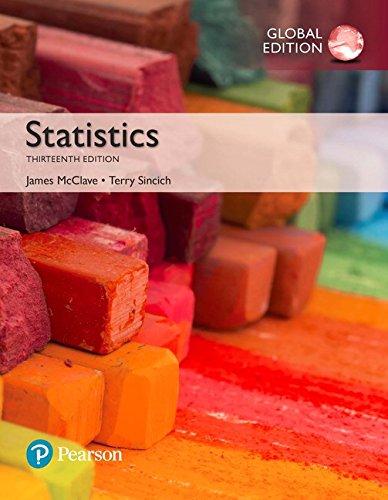Comparing mosquito repellents. Which insect repellents protect best against mosquitoes? Periodically, consumer groups conduct tests to compare
Question:
Comparing mosquito repellents. Which insect repellents protect best against mosquitoes? Periodically, consumer groups conduct tests to compare insect repellents
(e.g., Consumer Reports, June 2000). Consider a similar study of 14 popular mosquito repellents. Each product was classified as either an aerosol spray or as a lotion.
The cost of the product (in dollars) was divided by the amount of the repellent needed to cover exposed areas of the skin (about 1/3 ounce) to obtain a cost-per-use value.
Effectiveness was measured as the maximum number of hours of protection (in half-hour increments) provided when human testers exposed their arms to 200 mosquitoes.
The simulated data are listed in the table on p. 790.
a. Suppose you want to use repellent type to model the cost per use (y). Create the appropriate number of dummy variables for repellent type, and write the model.
b. Fit the model you wrote in part a to the data.
c. Give the null hypothesis for testing whether repellent type is a useful predictor of cost per use (y).
d. Conduct the test suggested in part
c, and give the appropriate conclusion. Use a = .10.
e. Repeat parts a–d if the dependent variable is maximum number of hours of protection (y).
Step by Step Answer:






